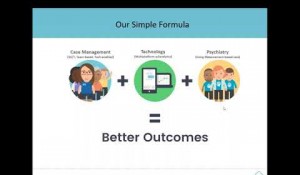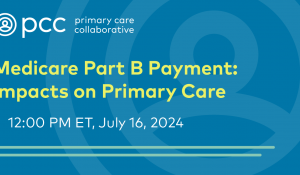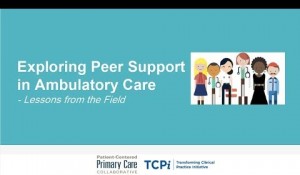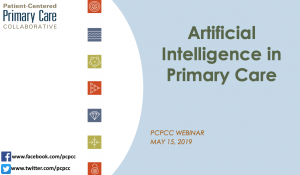You are looking at an archived version of our site. Please visit thepcc.org for a fresh, new experience!
Coordinated and Integrated

- Primary care integrates the activities of those involved in an individual’s care, across settings and services.
- Primary care proactively communicates across the spectrum of care and collaborators, including individuals and their families/care partners.
- Primary care helps individuals and families/care partners navigate the guidance and recommendations they receive from other clinicians and professionals, including supporting and respecting those who want to facilitate their own care coordination.
- Primary care is actively engaged in transitions of care to achieve better health and seamless care delivery across the life span.
Resources
Care Coordination - August 2018
Properly coordinated patient care leads to greater patient safety and better outcomes. This resource provides information on why care coordination is so important and how it can be incorporated in to practice. It also includes links to resources for measures of care coordination.
Milbank Memorial Fund - May 2018
Behavioral health integration models address a full spectrum of health needs and improve outcomes. These models require a specifically trained workforce. This resource suggests key areas of workforce development and policy that states should focus their resources on in order to create an environment where behavioral health integration models can function.
BMC Family Practice - January 2018
Health Affairs - September 2017
Health Care Managementy Review - March 2017
This study looks at team dynamics and care coordination. Better team dynamics were associated with better clinician satisfaction and improved care coordination. Addressing collaboration and teamwork could help practices improve clinician satisfaction and lead to better outcomes.
Health Affairs - March 2016
Journal of the American Board of Family Medicine - January 2016
The Commonwealth Fund - December 2015
This resource explores how the relationship between community health workers (CHWs) and patients can improve care and lead to better outcomes. Community health workers are uniquely positioned in the context of their patients' lives which gives them valuable insights into how to best help their patients. Integrating community health workers into the care team and creating collaboration between clinicians and CHWs can help improve treatment adherence and health outcomes.
Journal of the American Board of Family Medicine - September 2015
This analysis looks at practices that integrate primary care and behavioral health. They found five key constructs that influence this integration. 1) Integration reach; 2) establishment of continuum of care pathways addressing the location of care across the range of patient's severity of illness; 3) approach to patient transitions; 4) location of the integration workforce; and 5) participants' mental model for integration. These constructs can be utilized by practices looking to integrate behavioral health into their primary care services.
American Journal of Managed Care - September 2015
This study looks at the impact that the utilization of comprehensive care coordinators (CCCs) in primary care settings has on emergency department use. They found that CCCs effectively reduced ED use and could be used as a cost-effective and scalable method of care coordination.
American Journal of Managed Care - June 2015
This study researched primary care teams and their impact on care transitions. It found that practices with strong physician leadership had improved team functioning in care transitions. Conclusions of the study suggested that healthcare reform efforts that emphasize integrated care teams will lead to enhanced teamwork and improved transitions, which will help to achieve the quadruple aim.
Health Affairs - June 2010
Webinars
Secondary menu
Copyright © 2024 Primary Care Collaborative
































